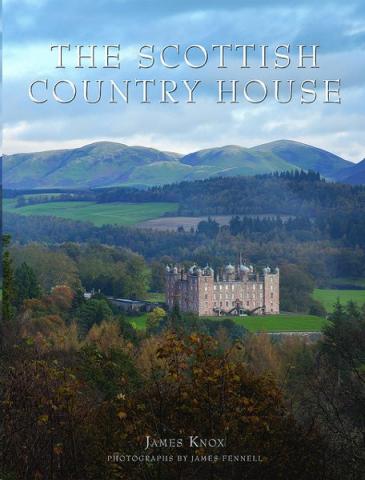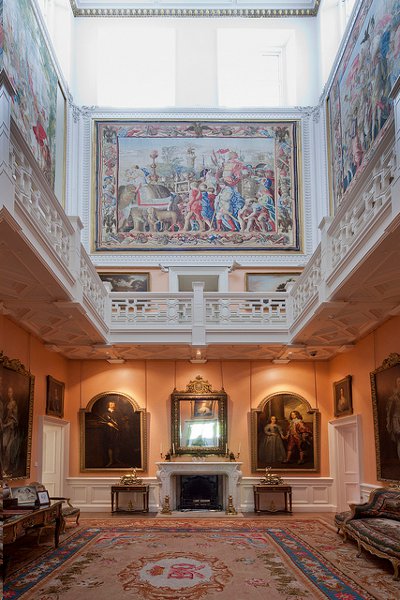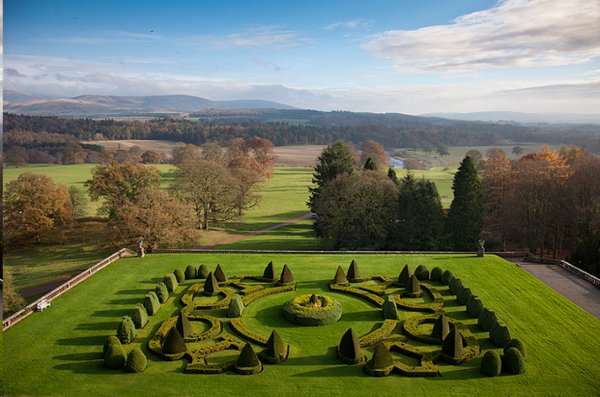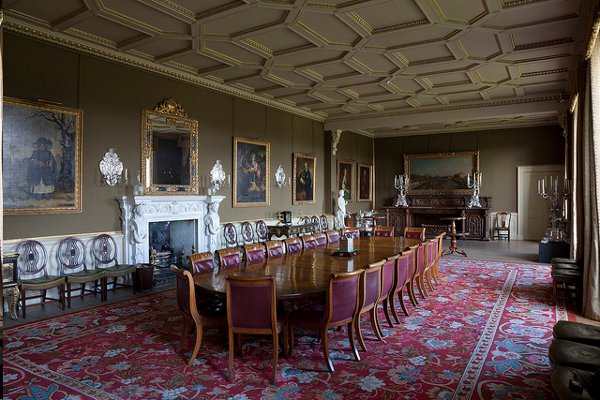‘Scottish Country House’ Depicts the History of Stately Homes With Stunning Visuals

James Knox was raised in Scotland; he has an art history degree from Cambridge and is a trustee for many Scottish trusts including The National Trust for Scotland. He is also an acclaimed writer and publisher.
In Scottish Country House, Knox takes you on a wonderful journey through the history of 10 houses and castles that have survived centuries in the Scottish countryside. All of these homes are largely privately owned by the original families or as part of a Scottish Trust. Not only does Knox bring you on a delightful tour through these charming houses and castles, but he also revels in the history of Scottish architecture and interior design.
Complimenting Knox’s narrative is James Fennell’s natural photography. Ferrell uses natural lighting, lending a lifelike feel to his pictures. This really brings out the allure and intimacy of the Scottish home. Ferrell photographs each room, the landscape, as well as specific items in the homes.

Great builders are showcased in the book, including William Bruce and his first great masterpiece, Balcaskie, the baroque style of William Adams’ Arniston, the Adams brothers’ Dumfries House in Ayrshire, and Robert Lorimer’s reconstruction of Monzie.
As Knox states, “The Scots engaged with their sublime landscape long before the cult of the picturesque awoke the rest of Britain to the pleasures of a good view.” The Scots were ahead of the curve in Great Britain setting the trend for architecture and landscape that would be copied throughout.
One of the great allures of Knox’s writing is that he focuses on tales of the nobles, ladies and lairds that made these castles and houses home. Some of the characters occupying these homes are more colorful and interesting than the homes themselves.

Learn about the House of the Binns, which became the first house handed over to the National Trust for Scotland after World War II. The original structure is tied to Thomas Dalyell, an adventurer, spy, and entrepreneur. Dalyell built one of the first modern Scottish homes of the time.
Then there’s Sir William Bruce’s stunning Balcaskie, which brought him to the forefront of architecture. Bought in 1698 by Sir Thomas Anstruther, it has stayed in the family up to this day.
Knox states, “Bruce was one of the very first architects in Britain to tie the design of his house to the surrounding untamed landscape.” He constructed gardens and stone terraces all to lead the eye throughout the property. Fennell’s wonderful kitchen photograph showcasing the array of copper cookware lining the walls is a highlight.

The Duke of Queensberry built some of Britain’s greatest castles, including the classical style of the castle of Drumlanrig with its contemporary baroque interior design. The castle is filled with towers, courtyards and terraces, yet no one knows exactly who designed the castle.
Each home has a specific history: the stunning Arniston country home that was built by William Adams and the land was once acquired from the Templar knights. Or Foulis Castle with 20 bedrooms and only one bathroom that wasn’t added until 1891. And Monzie Castle was ravished by a fire in 1908 during a luncheon.
Many great items, furniture and artifacts decorate the houses, which show the cozy Scottish appeal. Items include curling stones at Foulis Castle, a sport invented in Scotland; the Russian boots of General Tam at the house of Binns, who was a Russian Czar; telegrams announcing the visit of King George V to Ballindalloch; and the famous Scottish kilt.
Famous people from a U.S. President to a U.S. governor have had ties to these houses. Harry S. Truman can be traced back to the house of the Binns. One of Ballindalloch Castle’s famous owners was General James Grant who fought in the French and Indian War, American Revolution, and became governor of Florida. Then there’s Monzie Castle: the owner gave up her land in California (because she was tired of it) to Paul Getty, who would strike oil there. Getty became the founder of Getty Oil and donated the home, which is now the Getty Museum.
Some of the homes, like Ballinalloch, have been rooted in the whiskey rebellion with ties to the first distillery on the Spey River, the famous Glenfiddich. Another story is of Lady Claire Russell who wrote a best-selling cookbook with a section for dogs and built her husband a golf course for his birthday.
All of the interiors of the homes are exquisitely designed. There’s the classical style and rococo ceilings in the Dumfries House in Ayrshire, the Georgian design of Foulis castle, and the baroque style of Balcaskie.
What makes this a great coffee table book is that it’s a perfect blend of history and stunning photography. It’s this balance between the visuals and stories that brings the homes to life.
Author Bio:
Stephen Delissio is a contributing writer at Highbrow Magazine.





























































































































































































































































































































